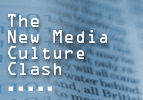



It would be hard to deny that the nature of writing is changing. With the advent of widespread e-mail and text messaging abilities, our writing styles and conventions have begun to shift. Given our print-based, often writing intensive academic culture, that cannot help but spill over into our college classrooms. Further, with the proliferation of new media technologies such as YouTube video streaming, social networking applications like Facebook, free blogging utilities, the ability to code animation with Adobe’s Flash software, or create web pages and post them for the world to see on the internet, print-based writing is no longer our only communicative, creative or scholarly outlet. In fact, some faculty find that students write more with digital tools, prefer to use them, and develop fluency more quickly when they employ the tools (Holder 2006, 76-77).
We fail to engage with these new tools at our students’ risk. As Sean Williams warns, “Students become discursively formed by what we as a discipline validate, and in the case of composition, the verbal bias forms student subjects who do not value (and may not recognize at all) multiple modes of expression” (2001a, 26). Unfortunately, uncertainty and fear entrench our print reliance as Steve Westbrook explains,
Uncertain of how the transition from print to digital cultures will ultimately affect education in writing and, perhaps, threatened by the pace of developments in multimedia composing technologies, those of us in composition and creative writing tend to rely, sometimes too readily, on the common sense of our fields. That is, we redeploy the lore and paradigms that we have inherited — the advice, warnings, or ways of knowing that the authorities of print culture have given us — whether or not these are entirely appropriate for and ultimately beneficial to writing students of the twenty-first century (2006, 459).Despite this uncertainty, we must make steady and continuing moves to embrace new media composition strategies.
Introduction • Essential questions • General benefits • Specific benefits • Important notes • Works cited • Home